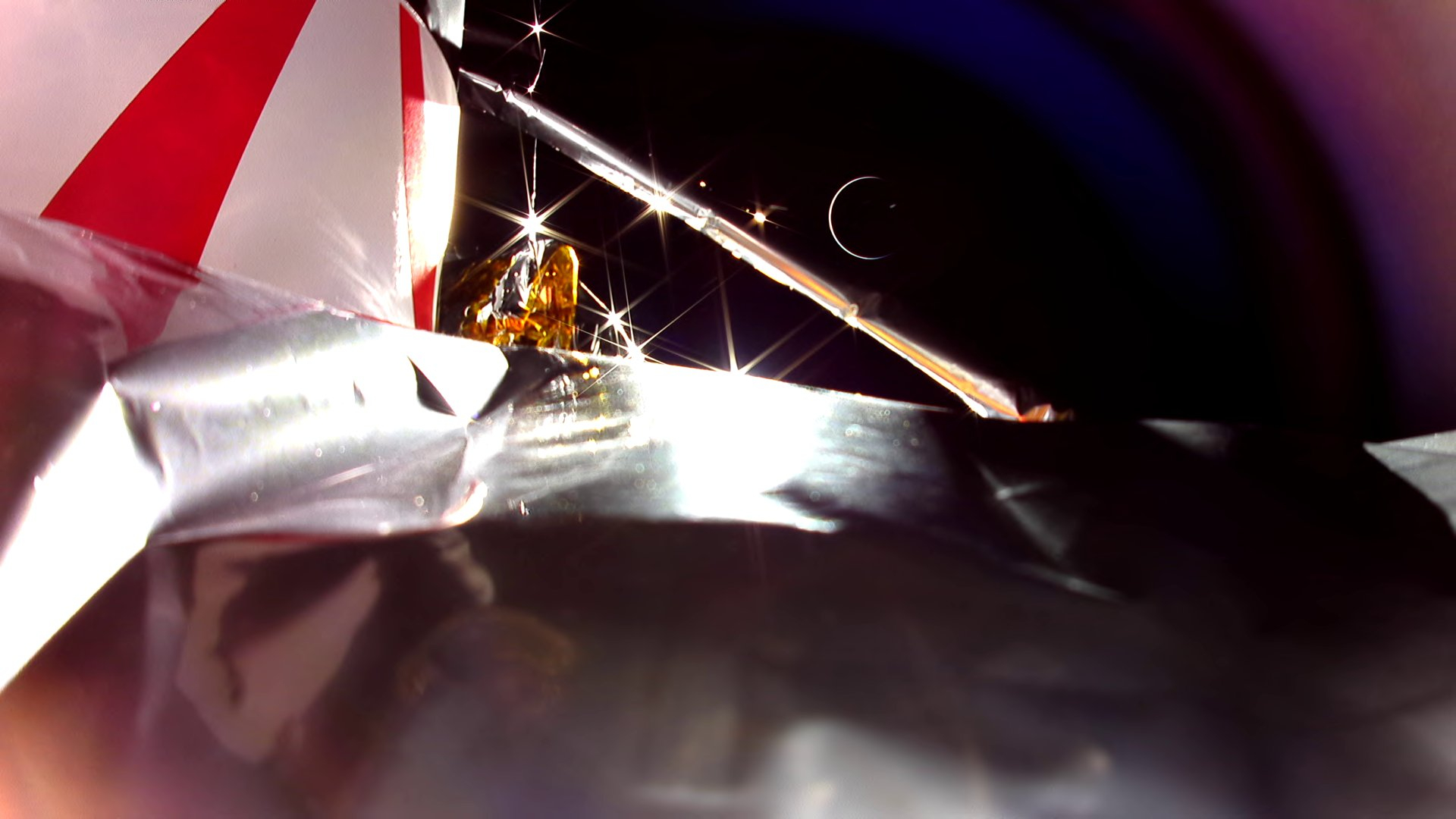Astrobotic loses contact with hobbled Peregrine moon lander

The end has apparently come for the troubled Peregrine moon lander.
Astrobotic lost contact with Peregrine at around 3:50 p.m. EST (2050 GMT) on Thursday afternoon (Jan. 18), the Pittsburgh-based company announced via X (formerly known as Twitter).
"While this indicates the vehicle completed its controlled re-entry over open water in the South Pacific at 4:04 p.m. EST, we await independent confirmation from government entities," the company wrote in an update that it posted to the social media site at around 8 p.m. EST on Thursday (0100 GMT on Friday, Jan. 19).
We'll learn more on Friday, when Astrobotic hosts a teleconference about Peregrine's mission and its fate. You can watch the event, which begins at 1 p.m. EST (1800 GMT), here at Space.com courtesy of NASA, or directly via the space agency.
Related: Private Peregrine moon lander failure won't stop NASA's ambitious commercial lunar program
Peregrine launched Jan. 8, on the debut flight of United Launch Alliance's new Vulcan Centaur rocket. Vulcan Centaur did its job well, but Peregrine suffered a serious anomaly shortly after deploying from the rocket's upper stage.
That problem was a fuel leak, which Astrobotic said may have been caused by a stuck valve, which in turn spurred the rupture of an oxidizer tank. This is a tentative diagnosis, however; we may get a firmer version during Friday's news conference.
Breaking space news, the latest updates on rocket launches, skywatching events and more!
The leak scuttled Peregrine's chances of journeying to the moon, which would have been historic: No private spacecraft has ever landed successfully on the lunar surface. But the probe remained functional, powering on all 10 of its payloads that required juice and operating in the final frontier for more than 10 days. (Peregrine also carried 10 other payloads that were passive, including memorial capsules provided by the companies Celestis and Elysium Space that contained human remains.)
Five of Peregrine's payloads were NASA science instruments, which came aboard via the agency's Commercial Lunar Payload Services program, or CLPS.
Peregrine's mission was the first CLPS effort to leave Earth, but another one is about to lift off: Nova-C, a lander built by the Houston company Intuitive Machines, is set to launch toward the moon atop a SpaceX Falcon 9 rocket next month.

Michael Wall is a Senior Space Writer with Space.com and joined the team in 2010. He primarily covers exoplanets, spaceflight and military space, but has been known to dabble in the space art beat. His book about the search for alien life, "Out There," was published on Nov. 13, 2018. Before becoming a science writer, Michael worked as a herpetologist and wildlife biologist. He has a Ph.D. in evolutionary biology from the University of Sydney, Australia, a bachelor's degree from the University of Arizona, and a graduate certificate in science writing from the University of California, Santa Cruz. To find out what his latest project is, you can follow Michael on Twitter.

